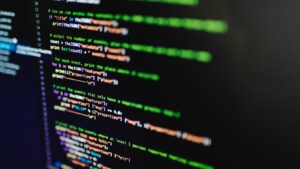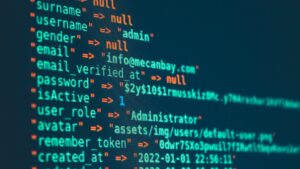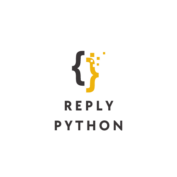 Are you looking to dive into the world of Python programming as a beginner? Finding the right resources, like a comprehensive PDF guide, can be a game-changer. In this digital age, having a handy PDF that covers the basics of Python programming can streamline your learning process and set you on the path to mastering this versatile language.
Are you looking to dive into the world of Python programming as a beginner? Finding the right resources, like a comprehensive PDF guide, can be a game-changer. In this digital age, having a handy PDF that covers the basics of Python programming can streamline your learning process and set you on the path to mastering this versatile language.
Exploring Python programming through a well-structured PDF can offer a structured approach, making complex concepts more digestible. Whether you’re a student, a professional looking to upskill, or simply curious about coding, having a beginner-friendly PDF at your fingertips can be the key to unlocking the potential of Python. With the right guidance at your disposal, you can embark on your programming journey with confidence and clarity.
Python Programming for Beginners PDF
Python, a versatile and beginner-friendly programming language, has gained immense popularity for its readability and simplicity. It is known for its elegant syntax and is often recommended as the first language to learn for aspiring programmers.
What Is Python?
Python is a high-level, interpreted programming language that emphasizes code readability and simplicity. It supports multiple programming paradigms, making it suitable for various  applications, including web development, data analysis, artificial intelligence, and scientific computing. Python’s extensive standard library provides ready-to-use modules and packages, facilitating rapid development.
applications, including web development, data analysis, artificial intelligence, and scientific computing. Python’s extensive standard library provides ready-to-use modules and packages, facilitating rapid development.
Python’s clean and easy-to-understand syntax reduces the learning curve for beginners, enabling them to focus on problem-solving rather than intricate syntax rules. The language promotes good programming practices and encourages writing code that is both efficient and readable. Its versatility allows beginners to explore different programming domains and develop diverse skills.
Key Features of Python Programming for Beginners PDF
Python programming for beginners PDF offers a range of key features designed to enhance the learning experience and facilitate comprehension for novice learners.
Easy-to-Follow Tutorials
The Python programming guide in PDF format presents easy-to-follow tutorials that break down complex concepts into manageable chunks. Readers can progress through the material at their own pace, absorbing information systematically and reinforcing their understanding of Python programming principles.
Practical Examples and Exercises
One of the standout features of Python programming for beginners PDF is the inclusion of practical examples and exercises. These hands-on learning tools allow readers to apply theoretical knowledge to real-world scenarios, honing their skills through active practice and problem-solving. By engaging with practical exercises, beginners can solidify their grasp of Python programming concepts and build confidence in their coding abilities.
Choosing the Right Python PDF Guide for You
When choosing a Python PDF guide, there are essential factors to consider to ensure it aligns with your learning style and goals. Here’s a breakdown of what to look for:
Factors to Consider
- Content Structure: Check if the guide offers a structured approach with clear explanations, examples, and exercises to reinforce learning.
 Beginner-Friendly: Opt for guides that start from the basics and gradually progress to more advanced topics to build a solid foundation.
Beginner-Friendly: Opt for guides that start from the basics and gradually progress to more advanced topics to build a solid foundation.- Interactive Elements: Look for PDFs that include interactive elements like quizzes, challenges, or projects to engage you actively in the learning process.
- Relevance to Your Goals: Ensure the guide covers topics relevant to your interests, whether it’s web development, data science, or automation.
- Author Credibility: Consider guides authored by reputable sources, experienced Python developers, or recognized educational platforms for reliable content.
- “Python Crash Course” by Eric Matthes: This PDF guide is highly recommended for beginners, offering a hands-on introduction to Python with practical projects and exercises.
- “Automate the Boring Stuff with Python” by Al Sweigart: Ideal for beginners interested in automating tasks, this guide presents Python concepts through real-world examples.
- “Learning Python” by Mark Lutz: A comprehensive resource for beginners, covering fundamental Python concepts in depth with clear explanations and exercises.
- “Python for Data Analysis” by Wes McKinney: Recommended for beginners interested in data science, this guide explores Python’s applications in data manipulation and analysis.
- Official Python Documentation: The official Python documentation available in PDF format is a valuable resource for beginners, providing detailed explanations and examples directly from the Python creators.
When selecting a Python PDF guide, consider these factors and recommendations to enhance your learning experience and proficiency in Python programming.

